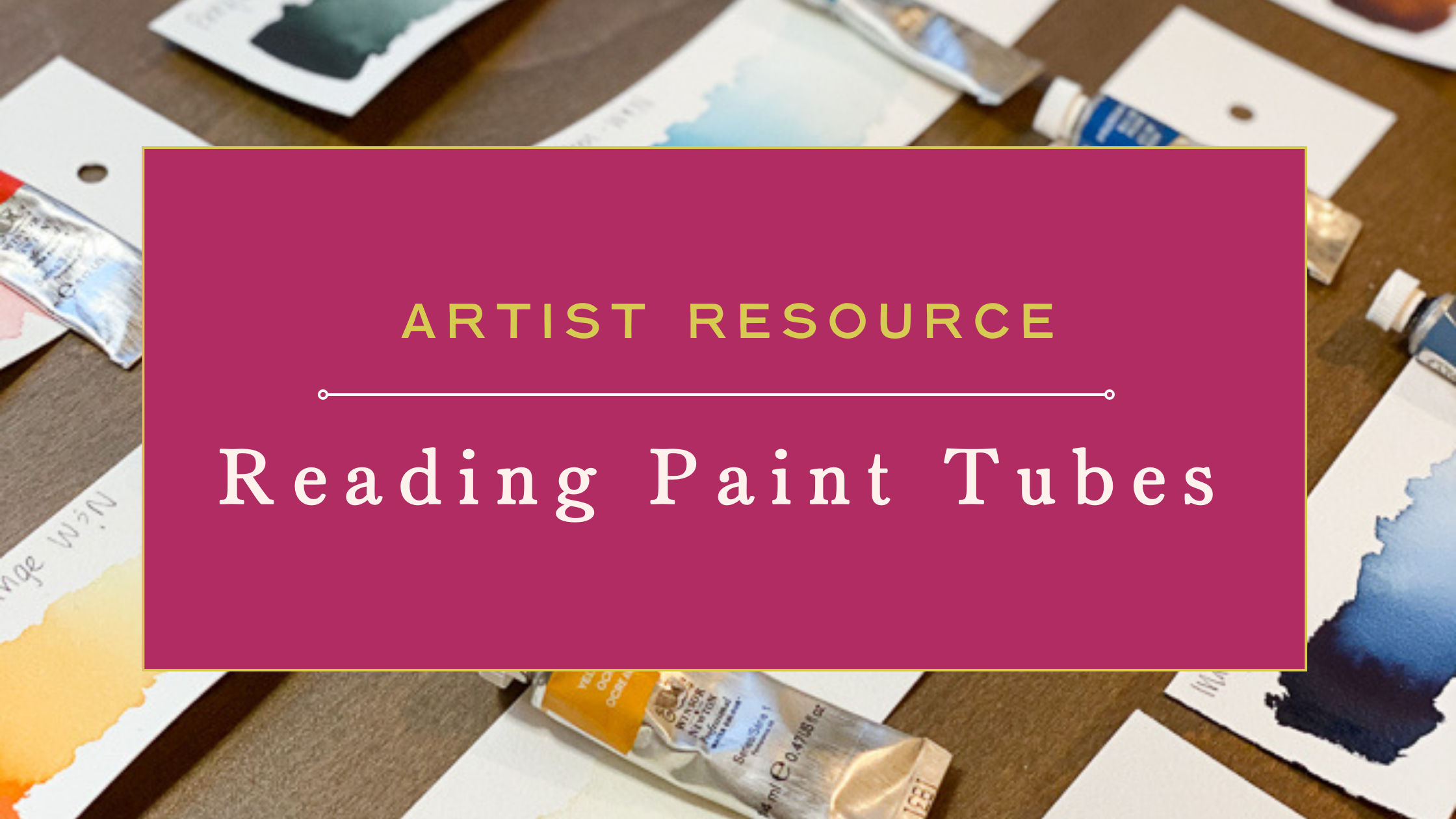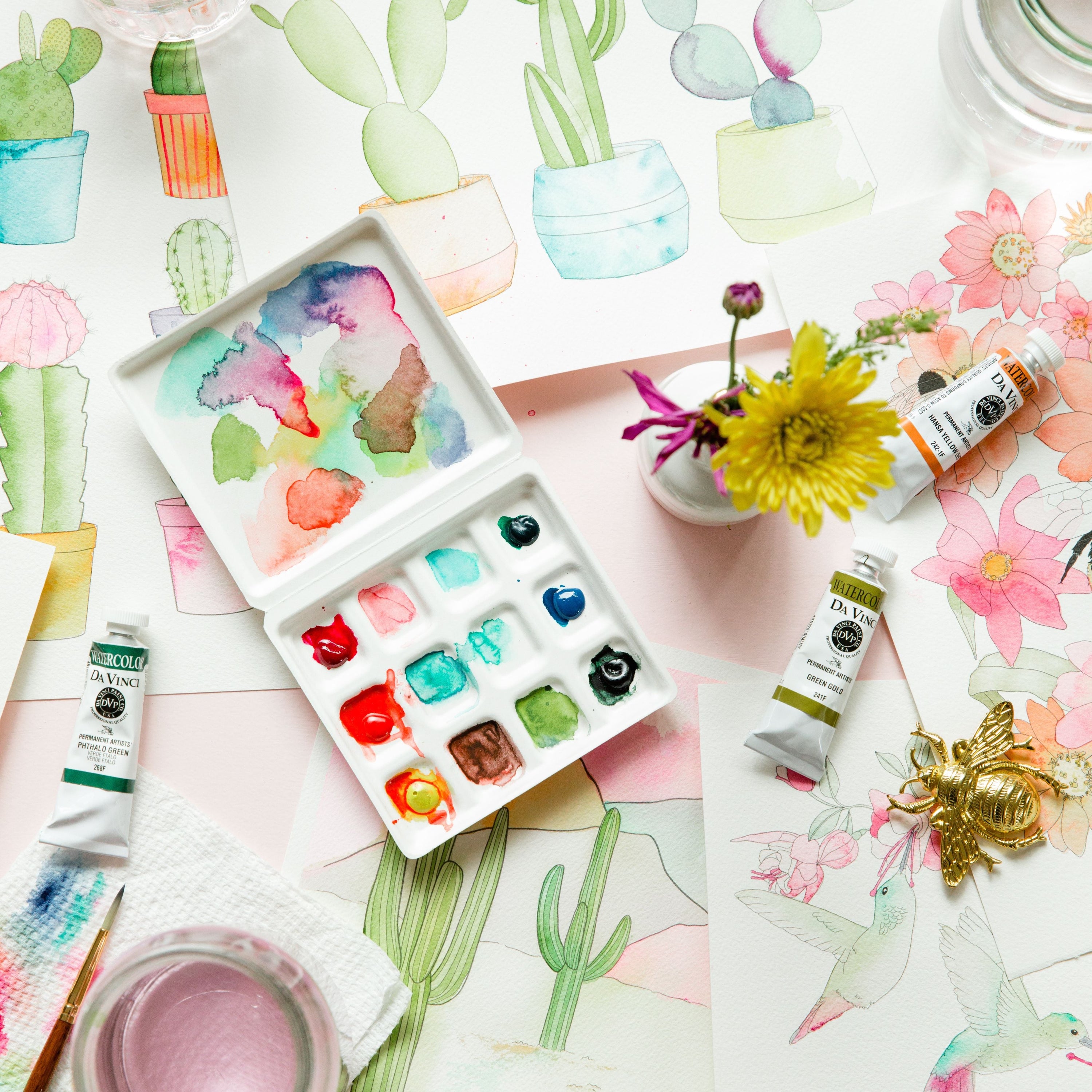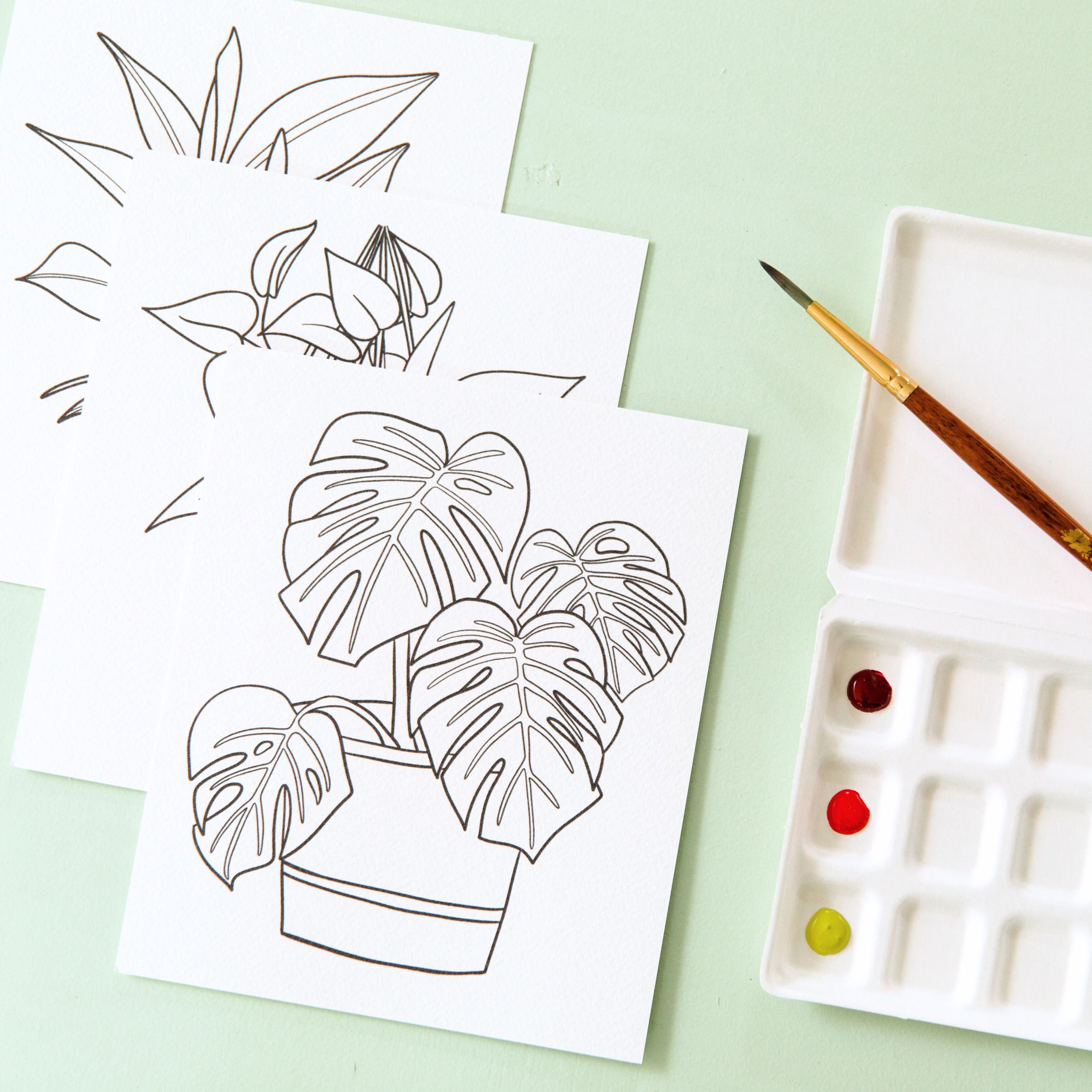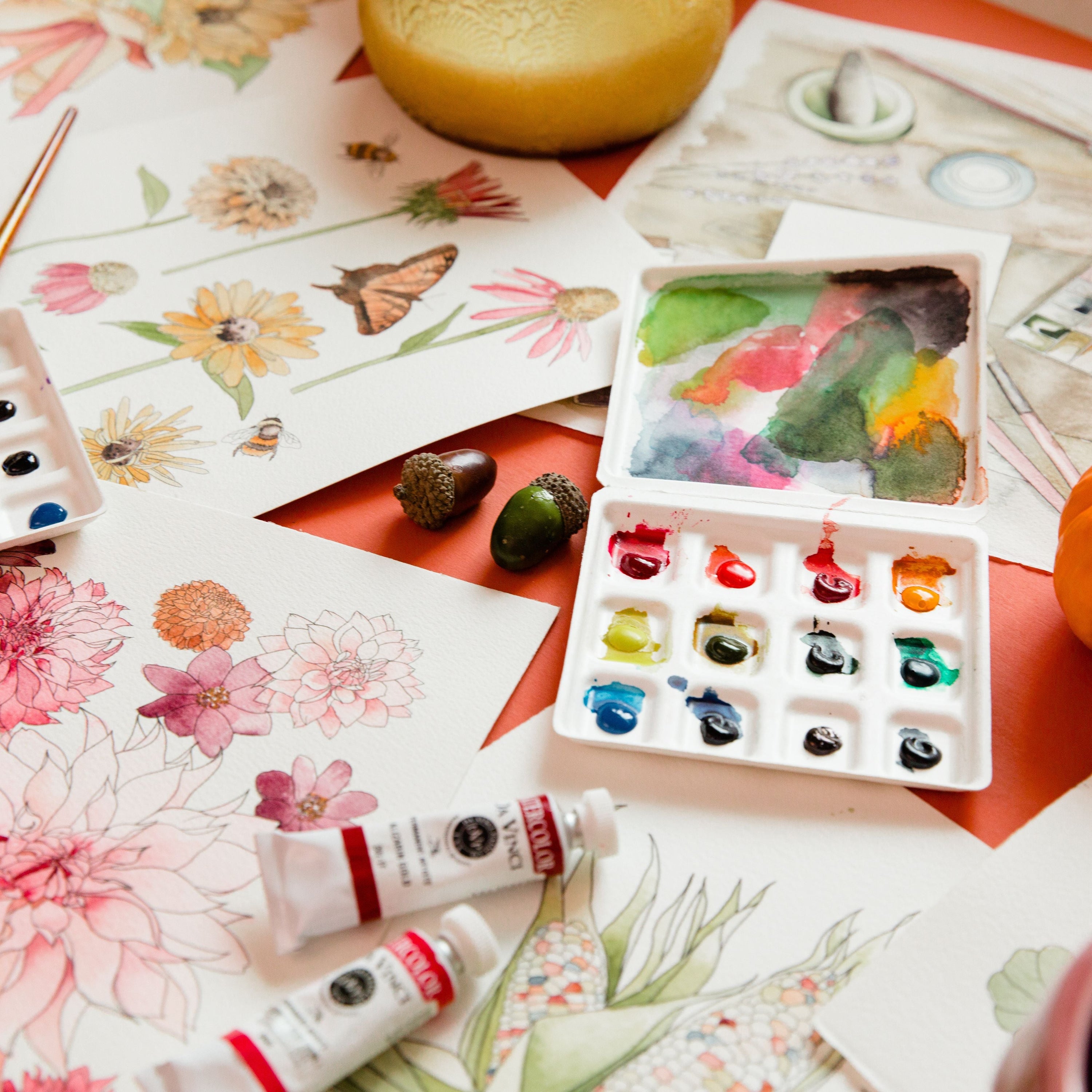


· By KATHERINE TALCOTT
Reading Paint Tubes
What’s in a name?!?!
Why paint names mean diddly squat and what you should look for instead
I always thought my dream job would be thinking up names for OPI’s nail polish, so punny, so apt, so thoughtful. Watercolor names pale in comparison to those clever themed names. While you would think that using more descriptive, standardized names for watercolor would be helpful, it isn’t always that easy to know what color you’re going to get - especially when trying paints across brands.
TLDR - I’m going to explain how to read a paint tube. If you want to skip straight to the good stuff, go find the diagram with the tube of paint and that will break it down for you!
I first discovered this when looking at Sap Green. I used to exclusively use the Permanent Sap Green from Winsor & Newton, but my local craft supply store only carries Daniel Smith so I thought, great! This will totally work.
Little did I know I would get home and find that the colors were not similar at all.
I mean sure, they were both green, but Permanent Sap Green from Winsor & Newton is a bold yellowy green color. Daniel Smith has a lot of earthiness and depth. Out of curiosity and because I have no chill, I decided to try MaimeriBlu’s Sap Green (oh shoooooot, I have to go buy more colors?!?!! For science!!!! I suppose I’ll take one for the team) and lo and behold — it too was TOTALLY different.
In fact, it actually looked like another color I had — Winsor & Newton's Oxide of Chromium!
To say I was bamboozled, doesn’t begin to cover it. I immediately bought dot cards from Winsor & Newton, Daniel Smith, and my new obsession MaimeriBlu so that I could compare and see what other colors were going to blow my mind! Some of my favorites are Green Gold, Phthalo Turquoise, and Payne's Gray!
So that lead me to thinking — so how the heck do I know what these paints are going to look like?!?! Sure they have little colors on the outside of the tube , but that isn’t really an accurate representation of what’s happening on paper. I was musing about this one day on a TikTok Live and Natasha from Natasha Jenkins Art or @themightierpencil on TikTok told me about how to read the numbers on the side of the paints!!!
Not coming from an art background, I didn’t know much at all about pigments and colors and all that fun stuff (YET!) but she opened up a whole new world/hyper-fixation/obsession for me. On each tube of paint, there are little codes that tell you everything you need to know about that paint!
Here’s your cheat sheet
Paint Name: Just a fancy title that has little to do with what is actually happening inside the tube.
Pigment Number: Paints are composed of pigments and a couple other things that help make the paint the right consistency. While the names of the paints may be the same from brand to brand, the ingredients may vary wildly. Think about how your grandma and your neighbor both have a recipe for lasagna, but they might use totally different ingredients. They’re both lasagna, but with their own flare. To continue with the lasagna metaphor, we’re going to look at the ingredients label to find out what actually goes into the lasagna.
The pigment number is composed of numbers and letters. These are standardized naming conventions that are used across manufacturers.
R is for Red, O is for Orange, Y is for Yellow, G is for Green, B is for Blue V is for Violet, BR is for Brown, W is for White, and Bk is for black. The P in front of most paint numbers is for “Pigment” - for example PG 137 is Pigment Green and the number indicates its standardized number. Don’t worry though — Nobody expects you to know all these numbers and letters - the more you deep dive into your paints, the more you’ll start recognizing certain qualities in your favorite pigments.
Activity: take a look at your favorite paint color and check out what you see!
Let’s take our Winsor & Newton's Permanent Sap Green for example:
Transparency: Transparency indicates how see-through or how transparent a paint is. Some paints are transparent, some are opaque and some are in the middle. If the shape is filled in, it is opaque. If it is just the outline it is transparent. While we love watercolors because they are transparent, different ones will be more see-through than others. Cadmiums, for example, are going to be more opaque. I personally prefer transparent colors because I LOVE a glaze.
Lightfastness: Lightfastness refers to how well a painting will last — will it hold its color if it’s hung on a wall or will it fade after a couple years. While this isn’t so important if you’re painting for fun--if you’re selling your artwork — this is something you’ll want to consider.
Staining: This isn’t to indicate which paints you should wear a smock for, rather it refers to how easily the paint can be lifted or removed from the paper. Some paint is super easy to lift off if you drop some on your painting, others are much harder to remove. This isn’t a reason to avoid staining pigments, however. I find those are the most vibrant pigments and my absolute favorite to use!
Granulation: While this isn’t always indicated on the tube, I like to know if a paint granulates - Granulation refers to when the pigments (remember the little bits of dust-like particles that are the main ingredients of our paint) are visible when the paint is applied to paper. It can have a sandy or earthy texture. Some paints blend together really smoothly and others will have more granulation. At first I thought granulation meant it was a poorly made paint, but I’ve found that I really appreciate the texture that granulating paints provide. My absolute favorite is Daniel Smith’s Under Sea Green!
Now that we have our vocabulary down, let’s take a look at our other sap greens!
I encourage you to take a look at your favorite paints and their labels — do they have anything in common? Are they all staining? Do they all contain a certain pigment? Did this help you understand more about what you like in your paints? I know it really helped me to have the vocabulary to help explain what qualities I really love about my favorite paints!
Let me know your favorite paint color in the comments!
This blog may include affiliate links.
I only recommend products I would use myself and all opinions expressed here are our own. Links may contain affiliate links. At no additional cost to you, I may earn a small commission.








